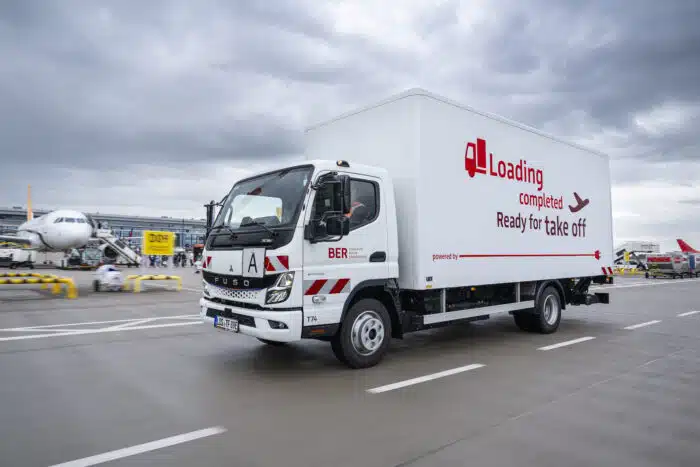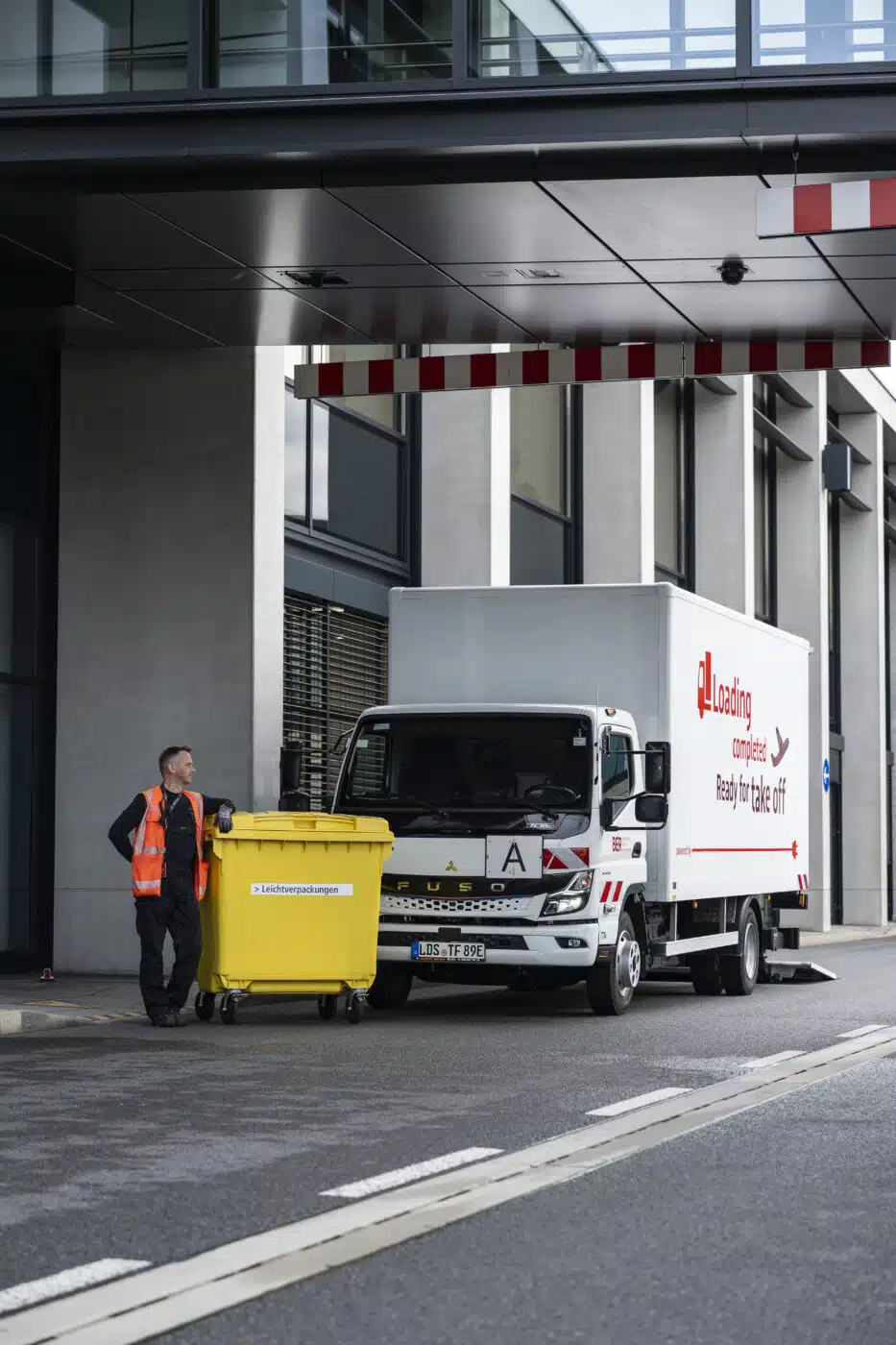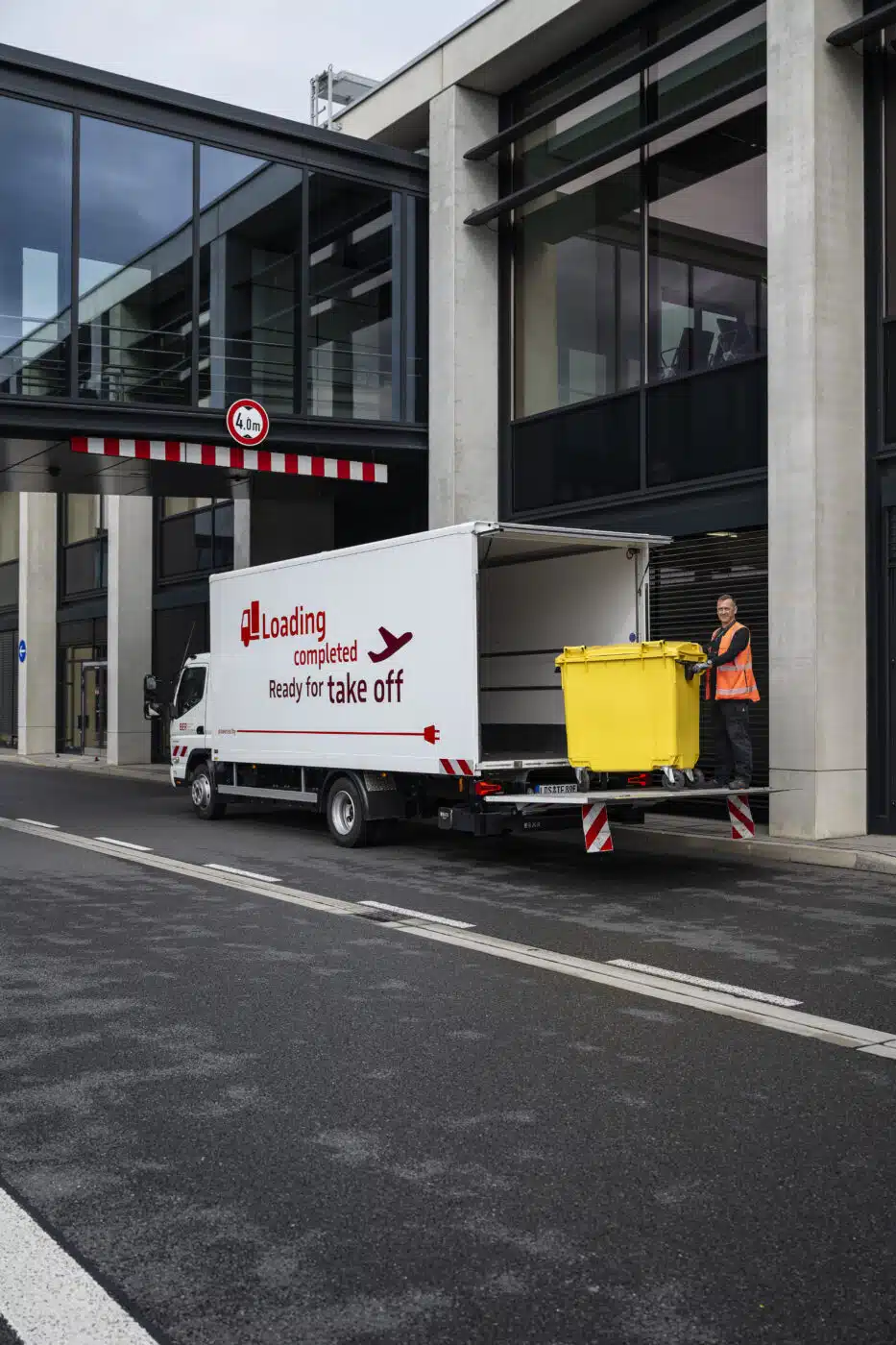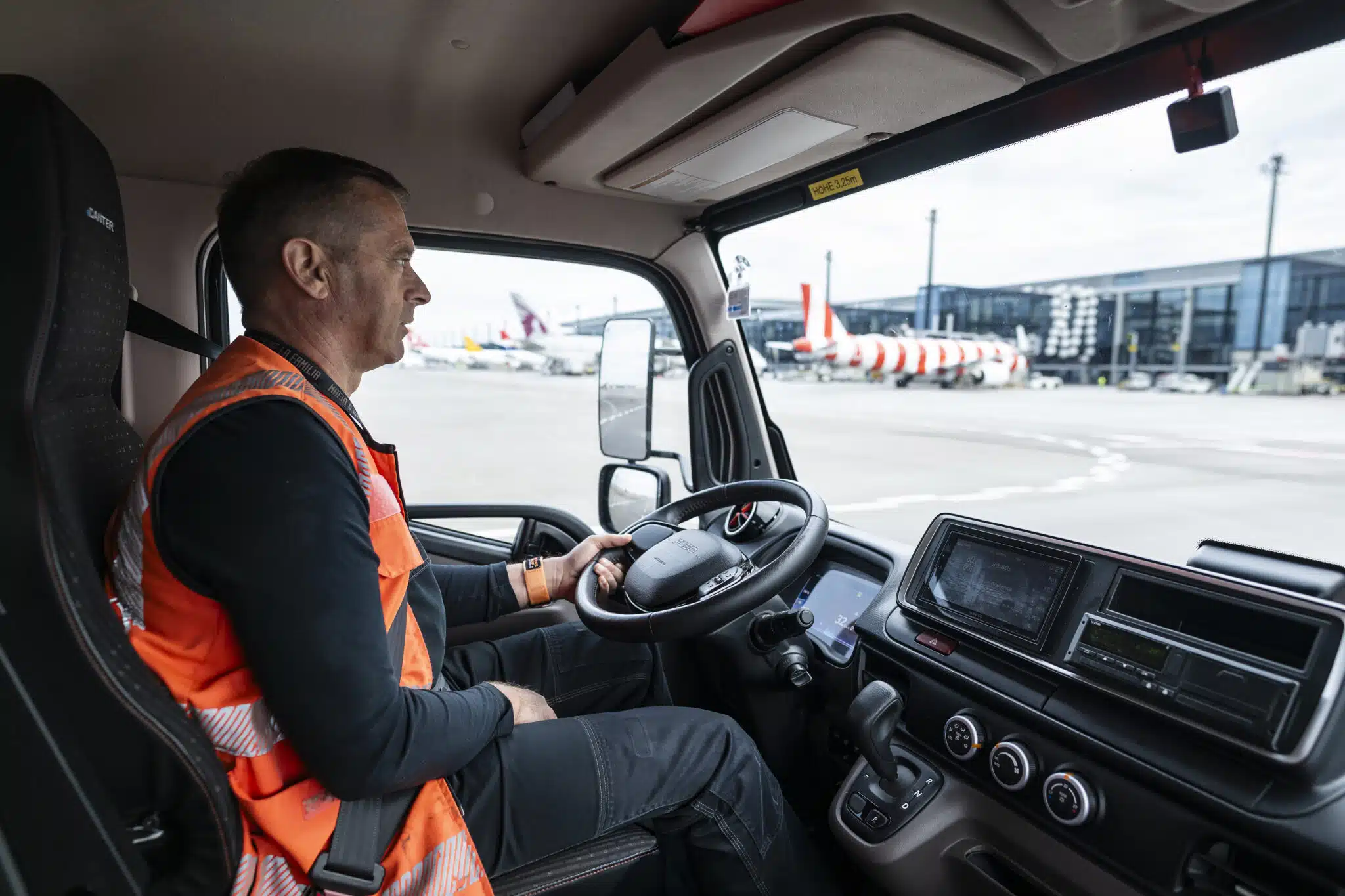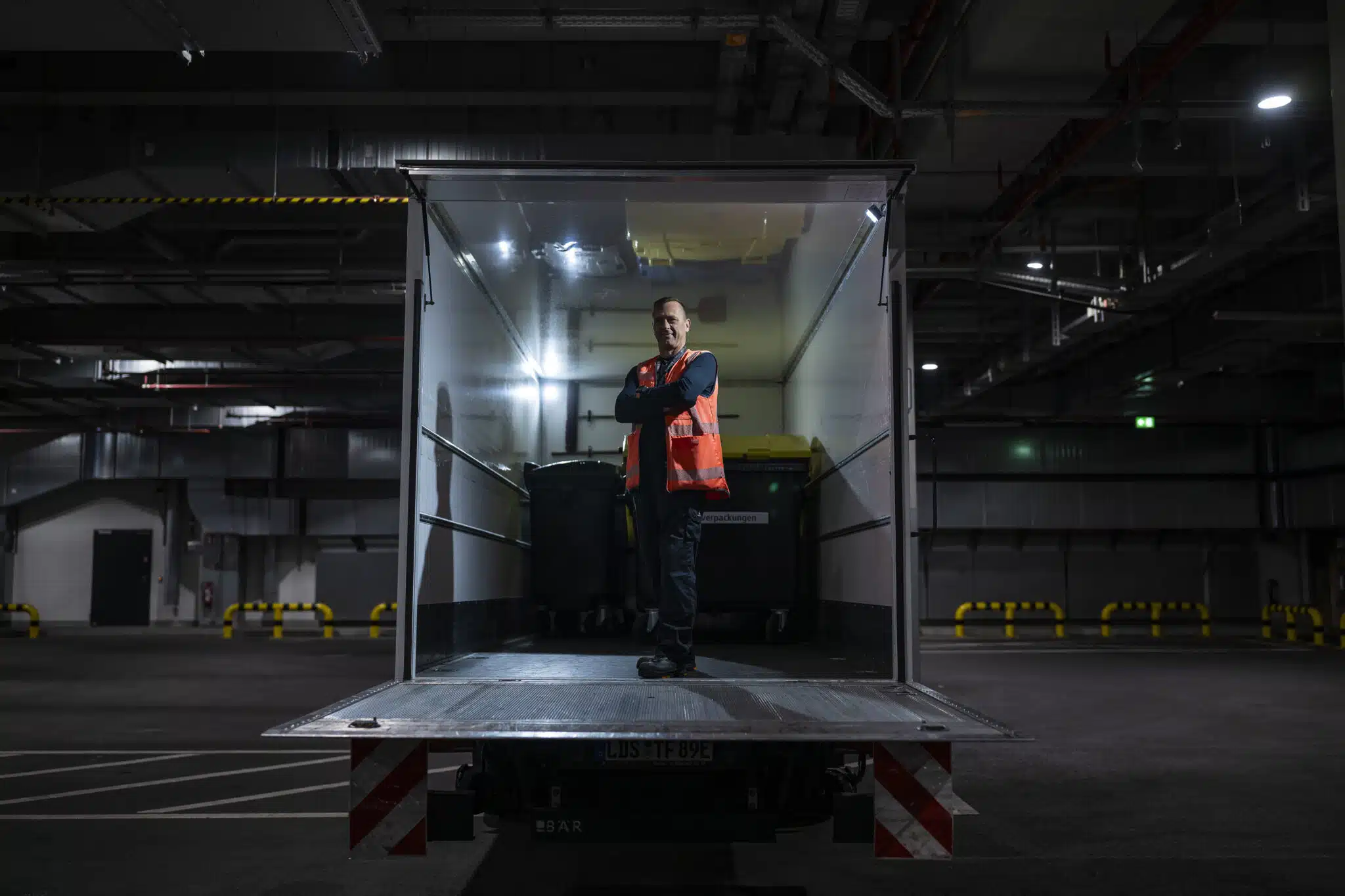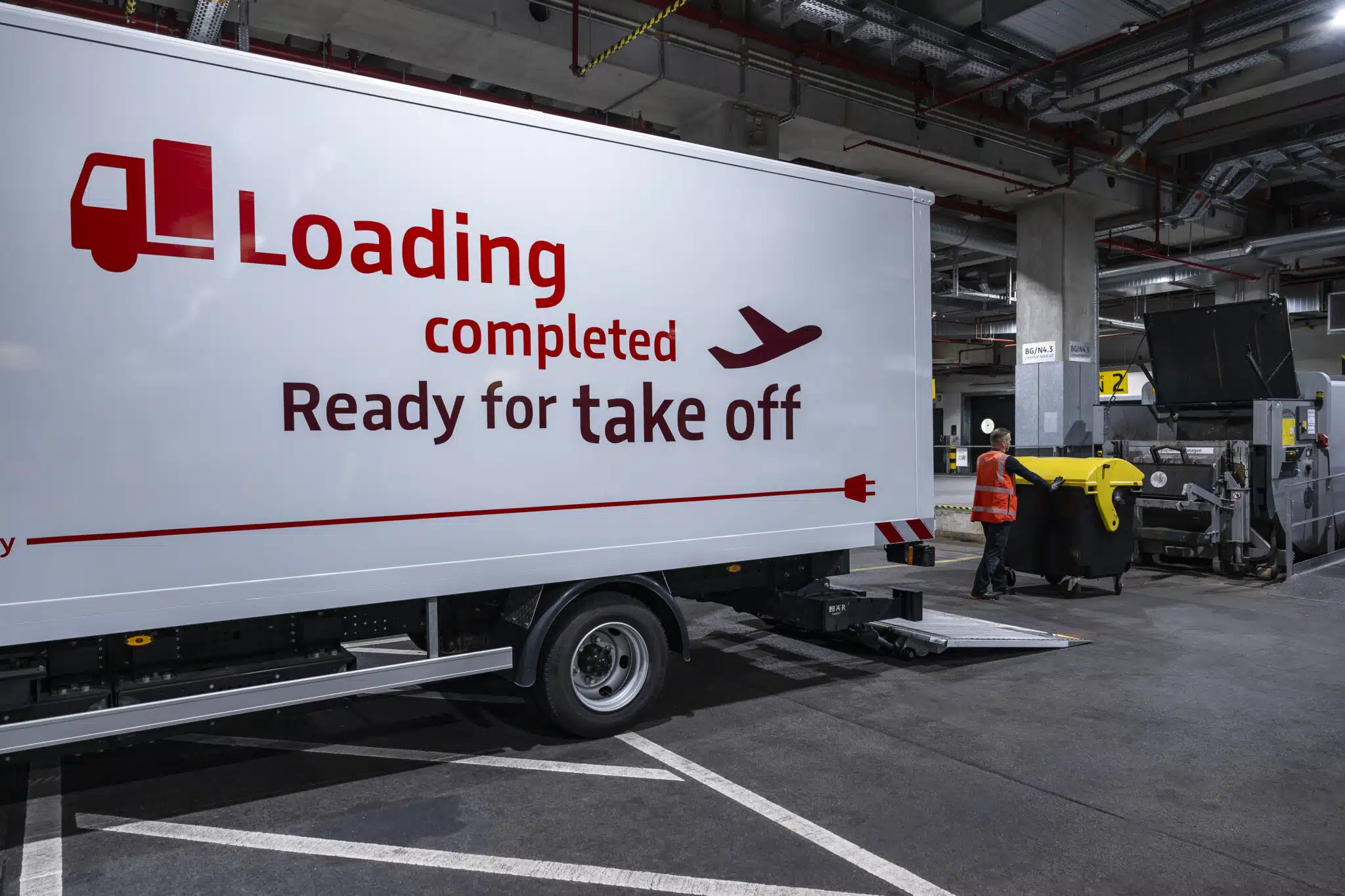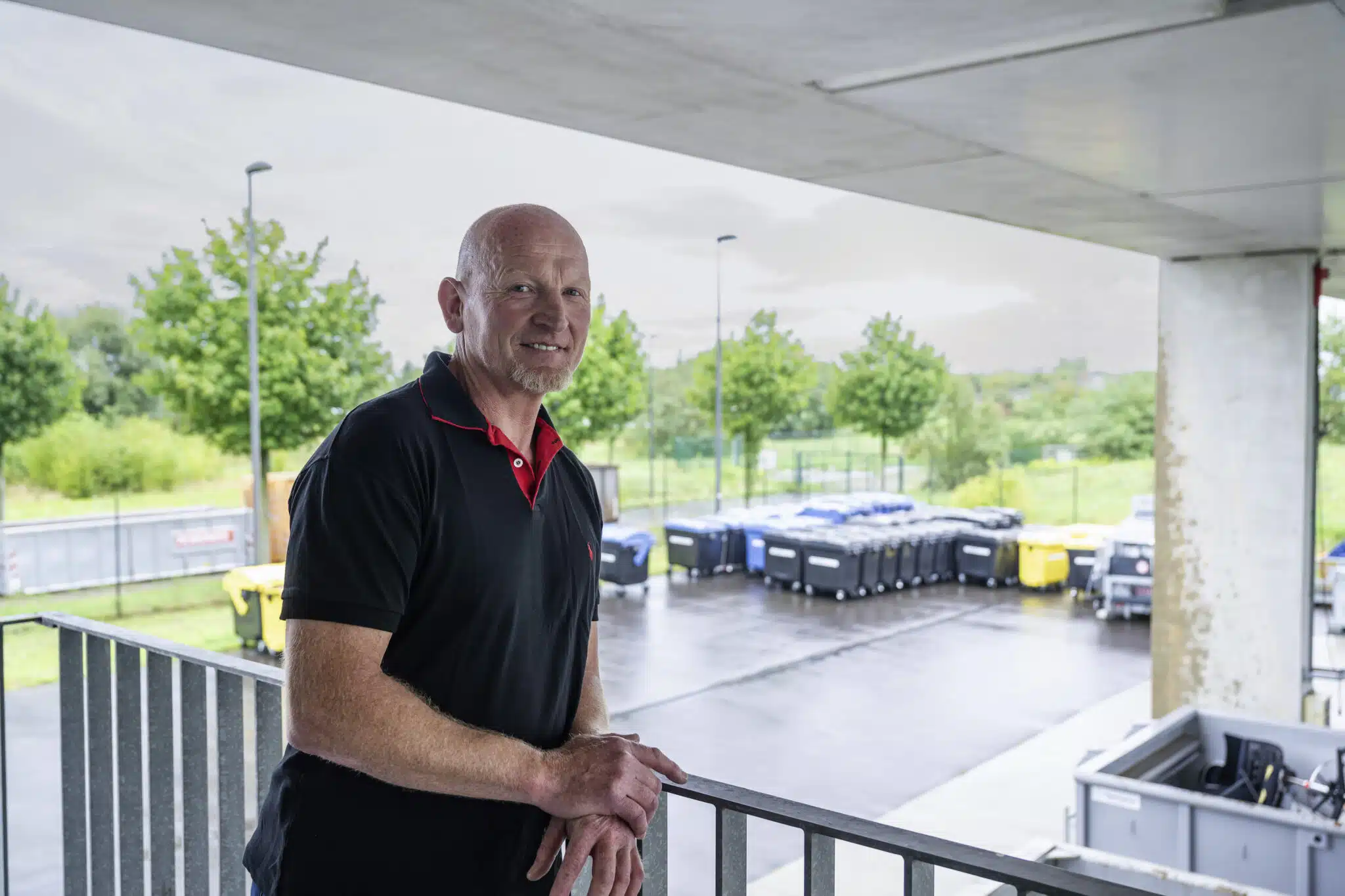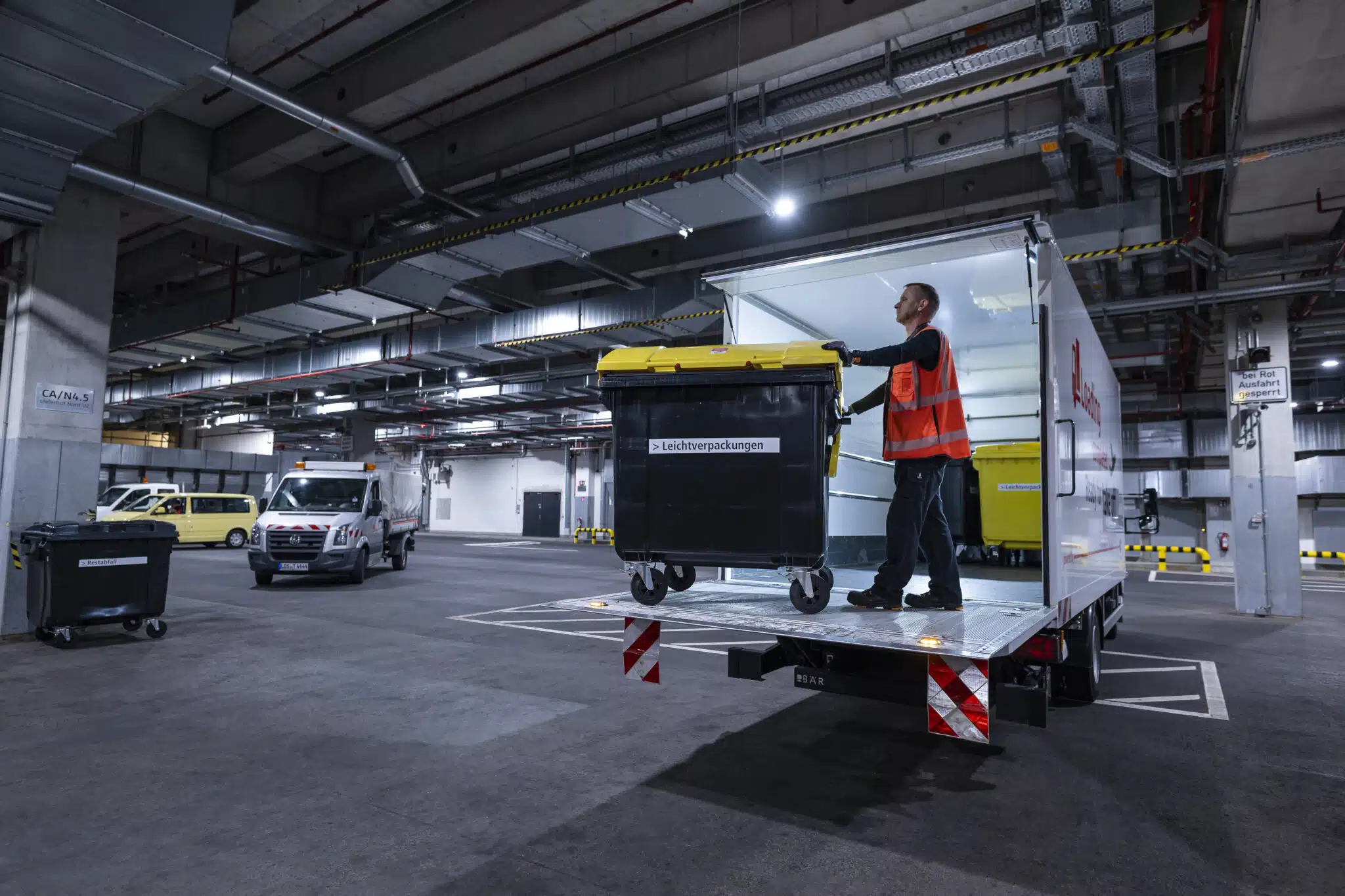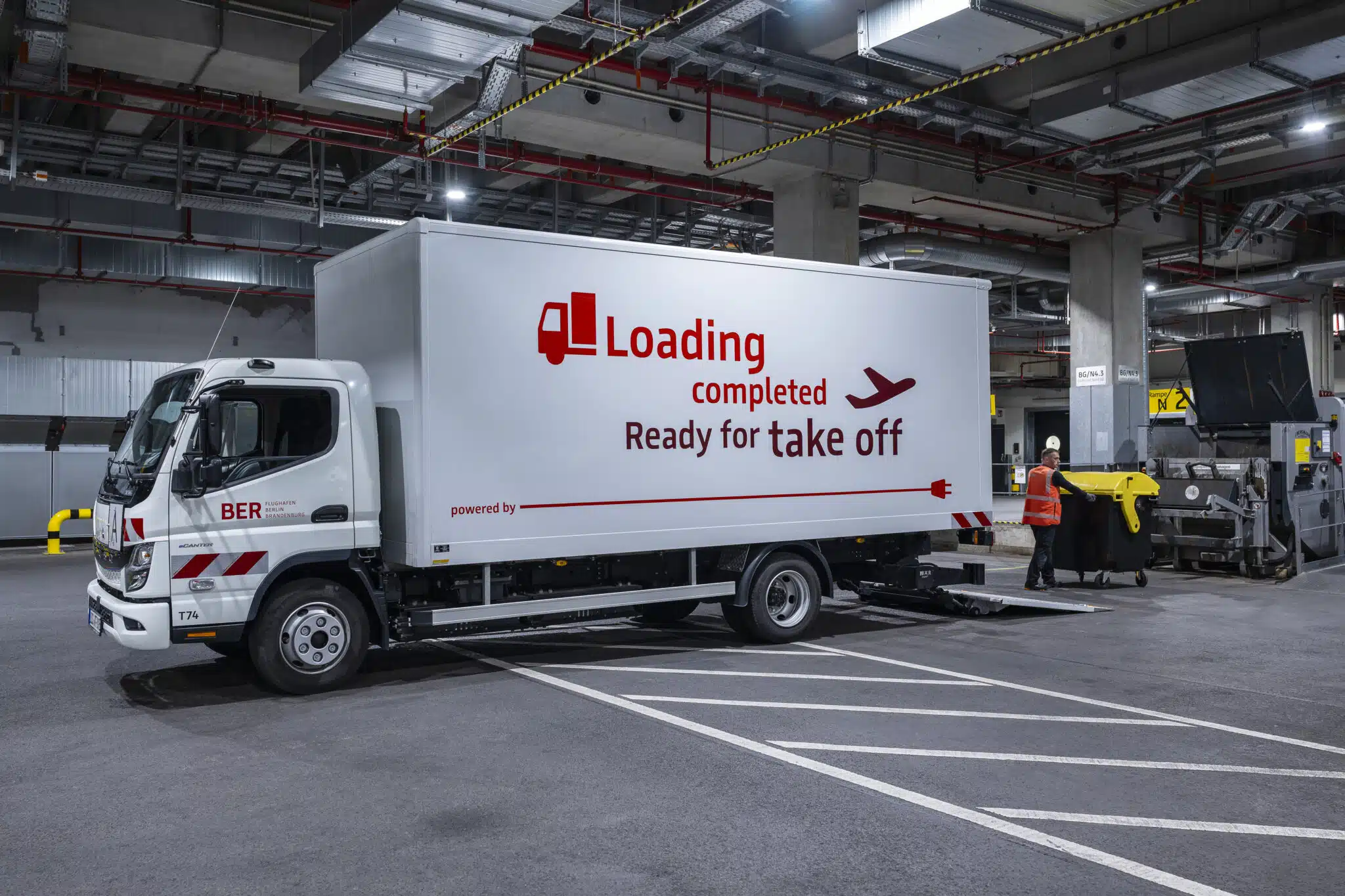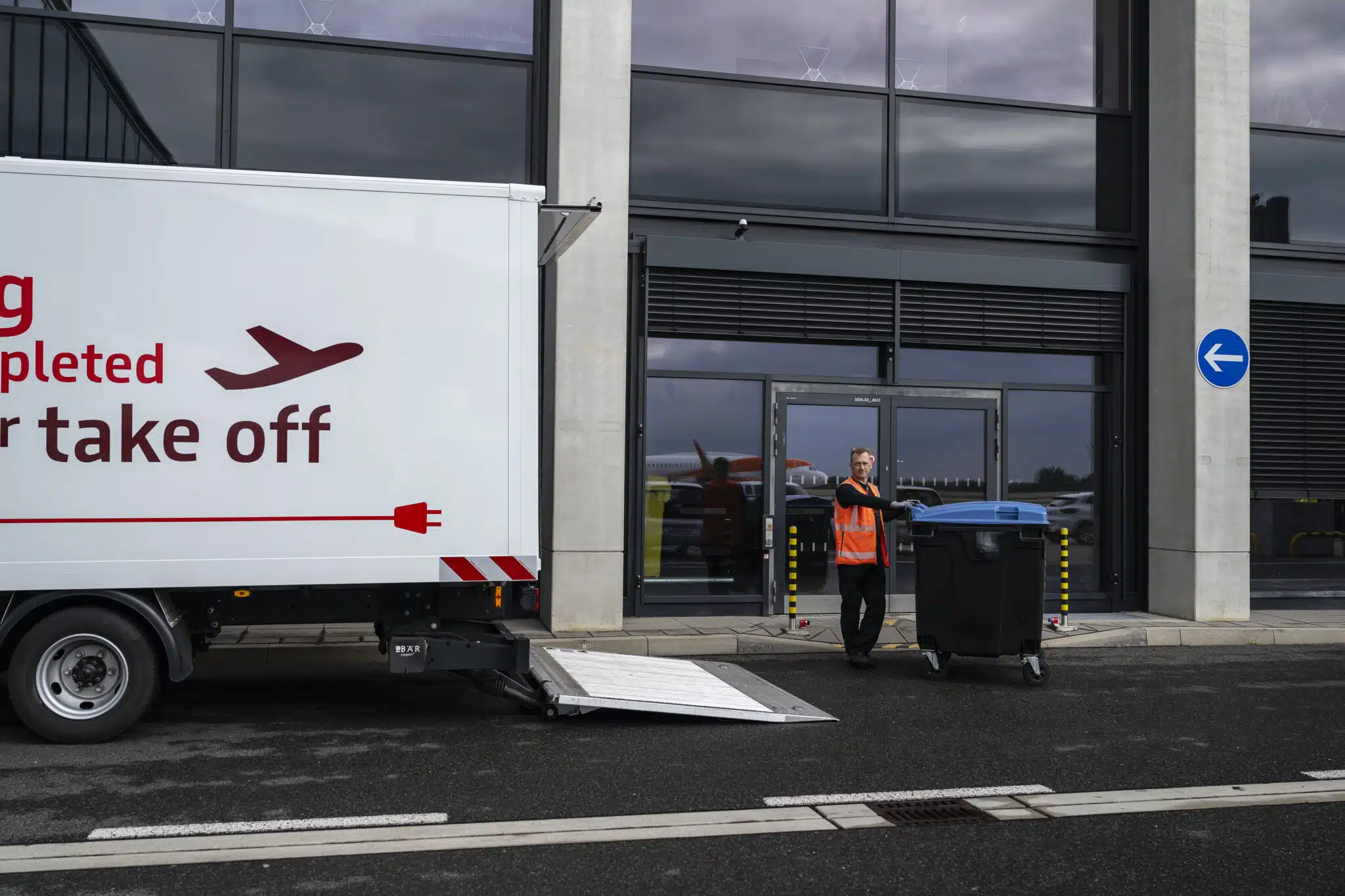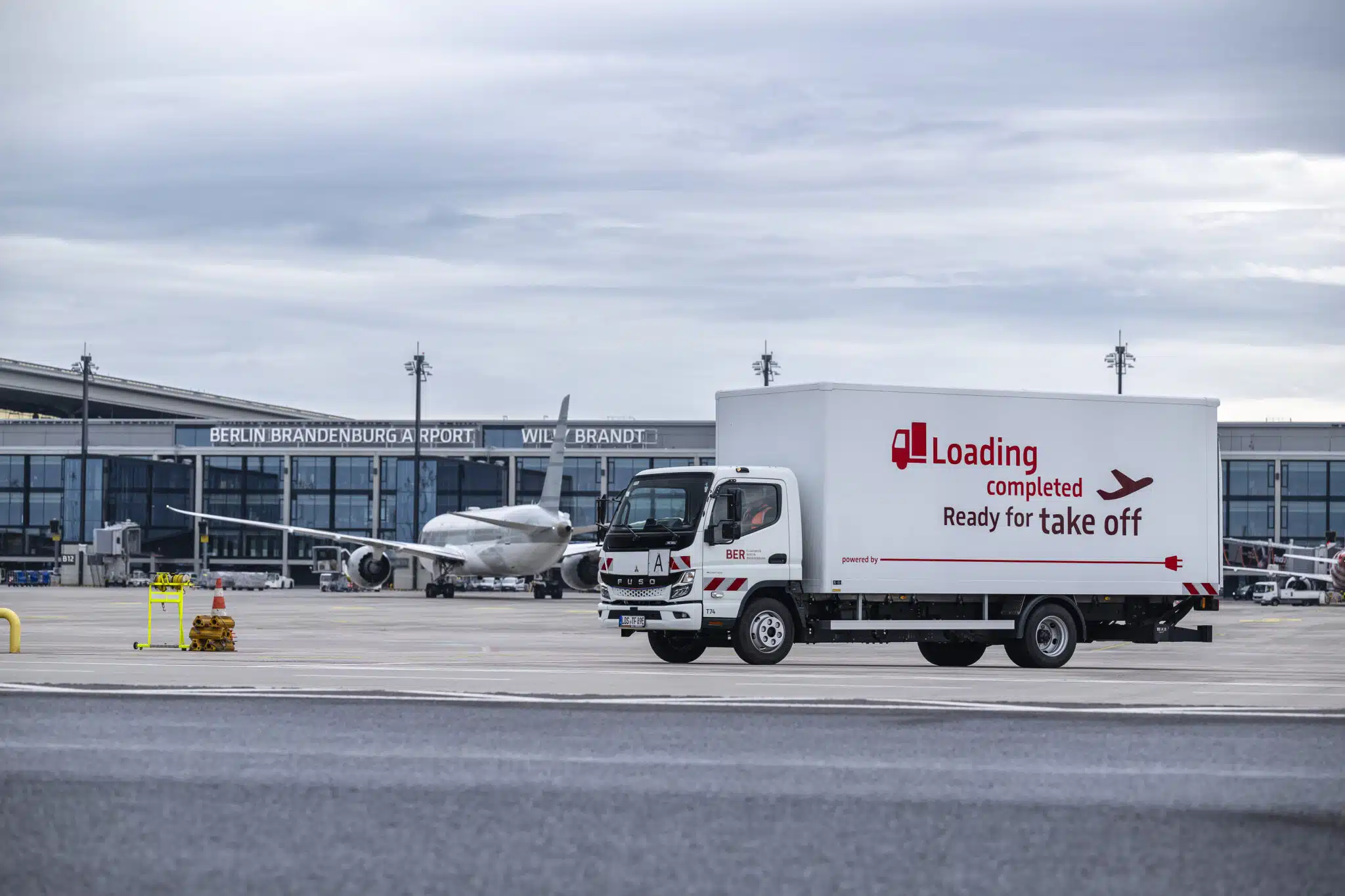For one and a half years now, Berlin Brandenburg Airport GmbH has been relying on electromobility as part of its sustainability strategy for the handling of its internal waste and disposal logistics – as it turns out, this is exactly the right job for the FUSO eCanter 7C18e.
In calendar year 2024, 25.5 million passengers used the capital airport BER. This is made possible by around 20,000 employees, including the approximately 2,000 direct employees of the Berlin Brandenburg airport company, or FBB for short. “This is comparable to the population of a medium-sized small town, which is still visited by more than two dozen million passengers,” says Artur Heldt, Head of Waste Management at FBB, with a knowledgeable grin. What he also knows: Where there are people, there is waste. “We call it waste, the official term in the Circular Economy Act. This is because here at the BER, there are constantly new initiatives for avoidance in all areas, sorting as cleanly as possible and intensive recycling always before final disposal,” he confirms.
A look at the balance sheets shows that the waste management sector has handled a total of almost 3,300 tonnes of waste during the said period, divided into 39 types known as fractions. Smooth, flexible, fast, effective and efficient intra-company logistics is a must in view of these figures. The fact that it has been operating purely electrically since May 2024 is also fully in line with the airport’s sustainability strategy. “We are already used to electromobility thanks to the car pool for employees, so I thought in the course of a new acquisition that this would have to be possible with an electric truck,” recalls Artur Heldt.

